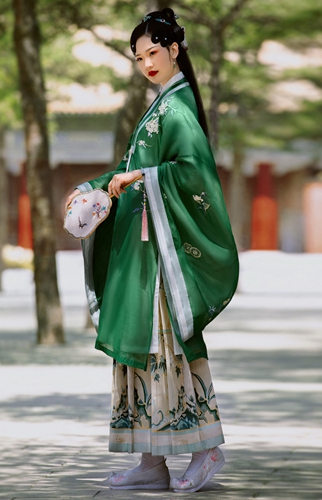Introduction to Hanfu
The Hanfu, a traditional Chinese clothing style, has a history that spans over three thousand years. It is a symbol of Chinese culture and tradition, reflecting the aesthetic and cultural values of the Chinese people. The Hanfu is characterized by its distinctive silhouette, with flowing sleeves, a cross-collar, and a sash to fasten the garment. It is not only a form of clothing but also an important part of Chinese cultural heritage.

History of Hanfu
The Hanfu has evolved through various dynasties, each leaving its unique imprint on the design and style. It was during the Han Dynasty that the Hanfu began to take its recognizable form. Over time, the Hanfu has been adapted and modified to suit the changing social and cultural landscape of China.

Styling the Hanfu
Styling the Hanfu involves selecting the right pieces to create a harmonious and elegant look. Traditional accessories such as hairpins, belts, and shoes are often used to complement the outfit. The choice of colors and patterns can vary depending on the occasion, with brighter colors often reserved for festive events and more subdued tones for daily wear.

Modern Revival of Hanfu
In recent years, there has been a resurgence of interest in traditional Chinese culture, leading to a revival of the Hanfu. Young people in particular are embracing the Hanfu as a fashionable and cultural statement. This modern revival has seen the Hanfu being worn at various events, from traditional festivals to contemporary gatherings.

Caring for Your Hanfu
Proper care is essential to maintain the beauty and longevity of your Hanfu. It is recommended to hand wash the garment in cold water with a gentle detergent. Avoid using bleach or harsh chemicals, as they can damage the fabric and colors. After washing, hang the Hanfu to dry in a well-ventilated area, away from direct sunlight.







